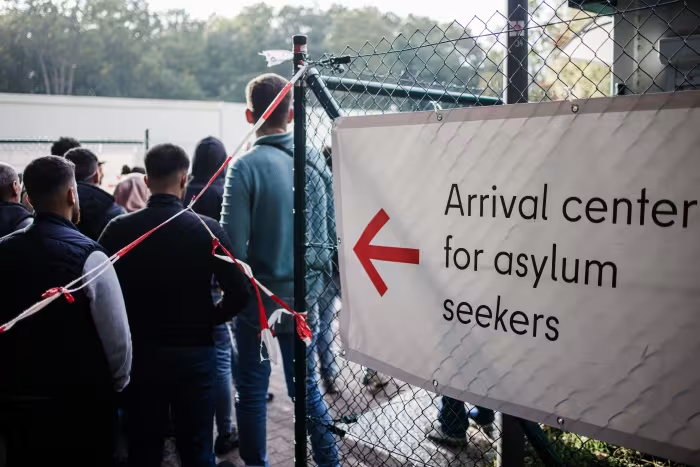The U.S. Green Card process can seem complex, but it’s a critical step for many who want to live and work in the United States permanently. You can acquire a Green Card through various methods such as family sponsorship, employment offers, or refugee status. Understanding these pathways is essential to navigate the process effectively.
Each route has its own requirements and timelines, which can create confusion. As you explore your options, knowing the steps involved will help you prepare and reduce delays. This blog post will guide you through the essential aspects of the Green Card application process and provide valuable tips.
Getting a Green Card opens up new opportunities for you and your family. The process may take time, but with the right information, you can make informed decisions and enhance your chances of success.
Understanding the U.S. Green Card
A Green Card allows you to live and work permanently in the United States. It serves as proof of your lawful permanent residency. There are different types of Green Cards based on your situation, each with specific requirements.
Definition and Purpose
A Green Card, also known as a Permanent Resident Card, grants you the right to reside in the U.S. as a legal permanent resident. It allows you to work without needing a specific job offer, except in certain cases.
Holding a Green Card also provides access to various benefits. These include social services, healthcare, and education. You can eventually apply for U.S. citizenship after meeting certain criteria, such as residing in the country for five years.
Types of Green Cards
There are several types of Green Cards. Each type serves different needs and has its own rules. Here are some common categories:
- Family-based Green Cards: For individuals with U.S. citizen relatives or permanent residents.
- Employment-based Green Cards: For those who have job offers or skills needed in the U.S.
- Diversity Visa: For individuals from countries with low immigration rates to the U.S.
- Refugee or Asylee Green Cards: For those granted asylum or refugee status.
Each category requires specific forms and documentation. You should explore the type that best matches your circumstances.
Eligibility Criteria
To get a U.S. Green Card, you must meet certain eligibility requirements. These depend on your situation, such as family ties, job offers, and humanitarian needs. Below are the key categories to consider.
Family-Based Green Cards
Family-based Green Cards are for those who have close relatives who are U.S. citizens or lawful permanent residents. The main types of relationships include:
- Immediate relatives: Spouses, children under 21, and parents of U.S. citizens.
- Family preference categories: Adult children and siblings of U.S. citizens; spouses and unmarried children of lawful permanent residents.
You must provide proof of your relationship. This may include birth certificates, marriage certificates, or legal documents. Because immediate relatives have priority, the process can go faster for them.
Employment-Based Green Cards
Employment-based Green Cards are available for individuals who have a job offer from a U.S. employer. There are several categories based on qualifications:
- EB-1: Priority workers, including people with extraordinary abilities and outstanding professors.
- EB-2: Professionals with advanced degrees or exceptional abilities.
- EB-3: Skilled workers, professionals, and other workers.
You’ll need a job offer and often a labor certification, which shows no qualified U.S. workers are available for the job. Some categories might require special skills or degrees.
Special Immigrant Categories
Special immigrant categories serve specific groups of people. This can include:
- Religious workers: Individuals who work for a religious organization.
- Foreign medical graduates: Doctors who have been trained abroad.
- Special Immigrant Juveniles: Minors who need protection due to abuse, abandonment, or neglect.
These categories often have unique requirements. For example, religious workers need to prove they have been working for a qualifying organization.
Humanitarian Programs
Humanitarian programs help individuals facing difficult situations. This includes:
- Asylum seekers: People who have fled their home countries due to persecution.
- Refugees: Individuals who have been forced to leave for similar reasons and are resettled in the U.S.
- Temporary Protected Status (TPS): Designation for individuals from countries experiencing crisis.
To qualify, you need to show credible fear of persecution or a significant crisis in your home country. Documentation and interviews usually play a critical role in this process.
Application Process Overview
The U.S. Green Card application process involves several key steps. You will need to gather forms and documents, understand visa availability, attend an interview, and navigate the decision-making phase. Each of these steps is crucial for a successful application.
Application Forms and Supporting Documents
To start your Green Card application, you must complete specific forms. The most common form is the I-485 (Application to Register Permanent Residence or Adjust Status). You may need other forms based on your situation, like the I-130 (Petition for Alien Relative) if a family member is sponsoring you.
In addition to these forms, prepare supporting documents. These include:
- Passport and photographs
- Birth and marriage certificates
- Proof of financial support, like tax returns
- Medical examination results
Make sure all documents are in English or accompanied by translations. Missing documents can delay your application.
Visa Availability and Priority Dates
Visa availability is important in the Green Card process. Each category of applicants has a limited number of visas issued each year. Your priority date is the date your application is received, which determines your place in line for a visa.
Check the Visa Bulletin issued by the U.S. Department of State. It provides updates on available visas and priority dates. If your priority date is current, you can proceed to the next steps. If not, you may need to wait until it becomes available.
Interview and Biometrics
Once your application is reviewed, you will be scheduled for an interview. This takes place at a U.S. Citizenship and Immigration Services (USCIS) office. Be prepared to answer questions about your application and background.
Before the interview, you will need to complete biometrics. This involves fingerprinting and photographing at a designated location. Biometrics help verify your identity and background.
During the interview, bring all original documents and any additional information requested. Successful interviews can lead to your Green Card approval.
Adjudication and Potential Obstacles
After the interview, USCIS reviews your application. This process is called adjudication. You will receive a decision through mail, which could be an approval or denial.
There may be obstacles during this phase. Common issues include missing documents or discrepancies in your application. In some cases, you may receive a Request for Evidence (RFE). Responding promptly is crucial.
If your application is denied, you have the option to appeal. Understanding the reasons for the denial will guide your next steps. Prepare thoroughly to minimize risks.
Post-Approval Steps and Responsibilities
After receiving your Green Card, you have important steps and responsibilities to follow. These include maintaining your permanent resident status, understanding your rights and benefits, and knowing the considerations for naturalization.
Maintaining Permanent Resident Status
To keep your Green Card status, you must follow U.S. laws. This means you should not commit any crimes or engage in activities that could lead to deportation.
- Residency Requirements: You should live in the U.S. for at least six months each year. Staying outside the U.S. for more than a year can make you lose your status.
- Renewal: The Green Card needs renewal every ten years. You must file Form I-90 to renew your card.
- Report Changes: Inform USCIS about any change in your address within ten days.
Rights and Benefits
As a permanent resident, you enjoy certain rights and benefits in the U.S.
- Work Authorization: You can work for any employer without needing special permission.
- Access to Education: You can attend public schools and some colleges at in-state tuition rates.
- Legal Protection: You have the right to live and travel freely in the U.S., with some limitations.
In addition, you can sponsor certain family members for their Green Cards, helping them gain residency.
Considerations for Naturalization
If you plan to become a U.S. citizen, you need to meet some requirements.
- Continuous Residence: You must have lived in the U.S. as a permanent resident for at least five years. If married to a U.S. citizen, this may drop to three years.
- Physical Presence: You need to be physically present in the U.S. for at least half of the time during your residency period.
- Language and Civics: You will need to demonstrate knowledge of English and U.S. civics during the naturalization process.
Make sure to prepare for these steps well in advance.


